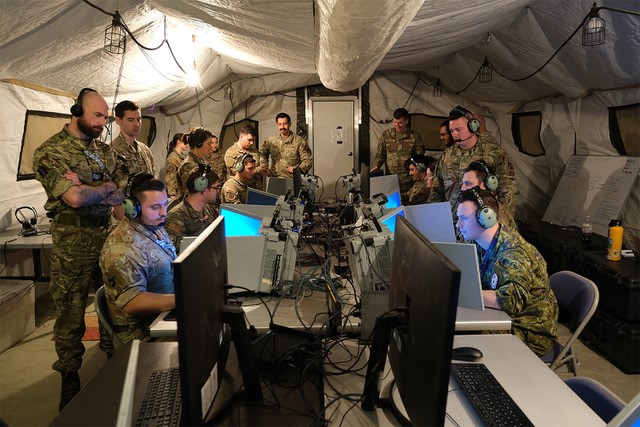Air Force plans ‘sprint week’ to experiment with ABMS solutions from industry

The Air Force Research Laboratory is inviting industry to participate in a weeklong series of experiments designed to explore potential software solutions for enhanced command and control.
The so-called “sprint week” is scheduled for Sept. 9-13 in Las Vegas, Nevada, and will address human-machine teaming capabilities that can help battle managers make faster and better-informed decisions when engaging with targets, according to a request for information posted to Sam.gov on Thursday.
The event will support the Advanced Battle Management System (ABMS) effort, which is the Air Force’s contribution to the Pentagon-wide initiative known as Combined Joint All-Domain Command and Control (CJADC2).
CJADC2 is an approach to warfighting that aims to enable data to move more effectively across distributed networks of sensors and weapons, allowing military leaders to quickly ingest information about incoming threats from multiple sources and take informed actions to defeat them. The various networks would be connected by faster communications, processing and decision-making systems supported by artificial intelligence and machine learning technologies.
AFRL’s upcoming sprint will focus on “Generating BattleCOAs” — one of the specific ABMS subfunctions that largely “explain the comprehensive set of battlespace information elements and decisions [a human-machine team] must make to battle manage the battlespace,” according to the RFI.
Specifically, it involves determining what existing weapons systems and effects would be needed to support battle managers in operations, effectively creating various courses of action that represent the steps, weapons and other tools that are needed to eliminate a threat. The RFI noted that this process currently involves numerous personnel and very little human-machine teaming capabilities.
“To win against a peer adversary, the joint force must achieve decision advantage by equipping human-machine teams with automation to sort through complex and high-volume battle management decisions with faster tempo and improved decision quality,” the document states.
During the first three days of the planned sprint week, invited participants will be able to quickly iterate and refine their human-machine teaming solutions against the Generating BattleCOAs problem set. The final two days will allow Air Force operators to test the refined solutions in a series of experiments.
“The goal is to compare decision performance against a baseline and provide measurable changes in decision performance of the human-machine team,” the RFI noted.
Experiments during the event will address a series of considerations outlined by AFRL — including how fast the capabilities can make decisions; how accurate and error-free those decisions are; how confident human operators are in the human-machine teaming solution; and can the service measure utility, cost and risk with a Generating BattleCOAs “instance.”
Vendors interested in participating must reply to the RFI by Aug. 9.



